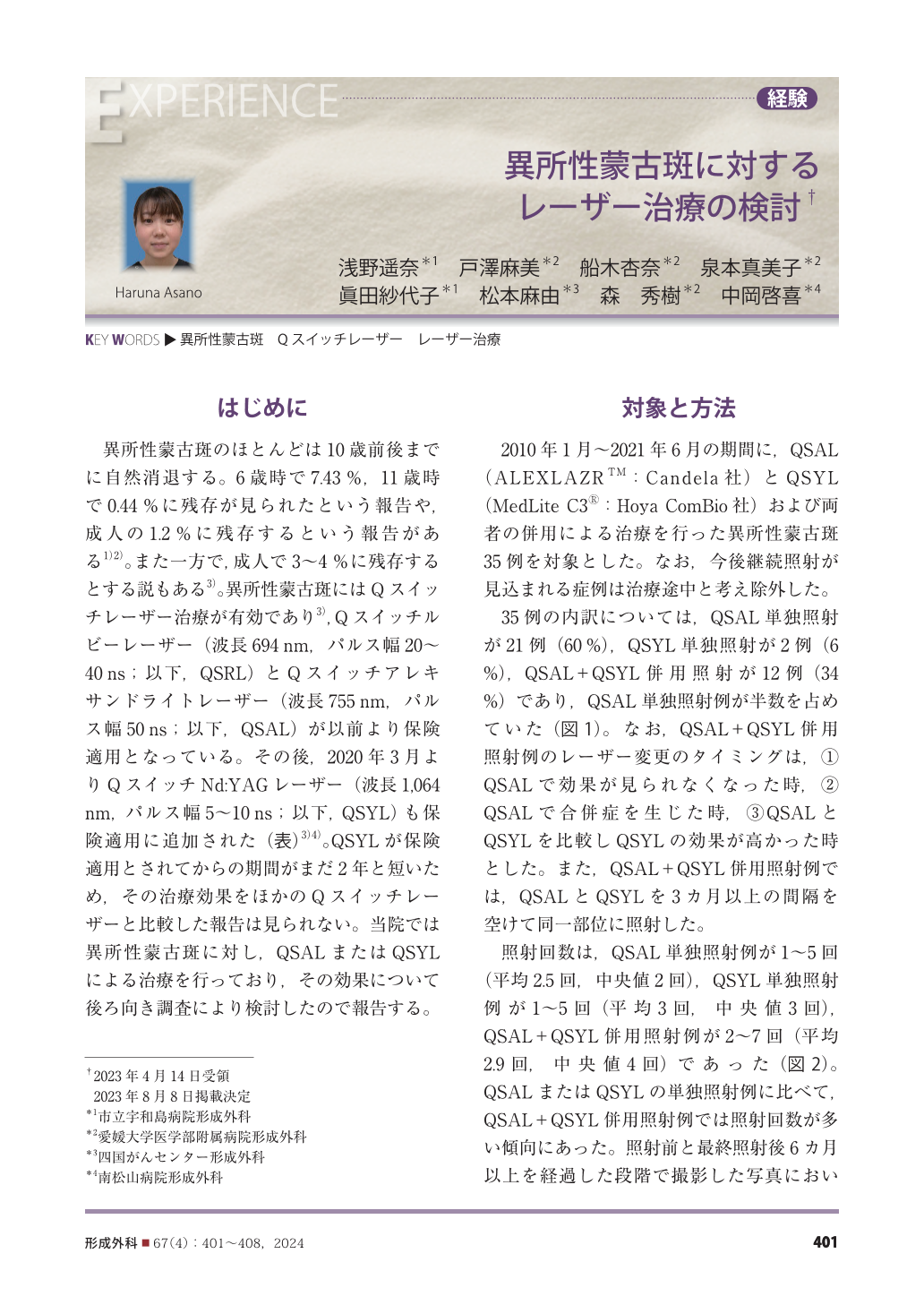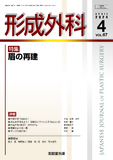Japanese
English
- 有料閲覧
- Abstract 文献概要
- 1ページ目 Look Inside
- 参考文献 Reference
はじめに
異所性蒙古斑のほとんどは10歳前後までに自然消退する。6歳時で7.43 %,11歳時で0.44 %に残存が見られたという報告や,成人の1.2 %に残存するという報告がある 1)2)。また一方で,成人で3~4 %に残存するとする説もある 3)。異所性蒙古斑にはQスイッチレーザー治療が有効であり 3),Qスイッチルビーレーザー(波長694 nm,パルス幅20~40 ns;以下,QSRL)とQスイッチアレキサンドライトレーザー(波長755 nm,パルス幅50 ns;以下,QSAL)が以前より保険適用となっている。その後,2020年3月よりQスイッチNd:YAGレーザー(波長1,064 nm,パルス幅5~10 ns;以下,QSYL)も保険適用に追加された(表) 3)4)。QSYLが保険適用とされてからの期間がまだ2年と短いため,その治療効果をほかのQスイッチレーザーと比較した報告は見られない。当院では異所性蒙古斑に対し,QSALまたはQSYLによる治療を行っており,その効果について後ろ向き調査により検討したので報告する。
Ectopic Mongolian plaques usually resolve spontaneously but may persist into adulthood. Those that persist can be effectively treated with a Q-switched laser (ruby, alexandrite, Nd: YAG) whereas the relative efficacy of a Q-switched alexandrite laser (QSAL) in patients from Japan has not been determined.
We therefore conducted a retrospective study of the outcome of 35 patients treated for ectopic Mongolian plaques after QSAL, Q-switched Nd:YAG laser (QSYL), or both between January 2010 and June 2021. The study population consisted of 21 patients treated with QSAL, 2 with QSYL, and 12 with both. Overall, a good outcome was obtained in all patients. Among patients treated with both lasers, QSAL was typically followed by QSYL. Patients who no longer responded to QSAL were subsequently treated with QSYL, which had a positive effect. These results demonstrate the efficacy of QSYL irradiation after QSAL irradiation in patients with Mongolian plaques.

Copyright© 2024 KOKUSEIDO CO., LTD. All Rights Reserved.


